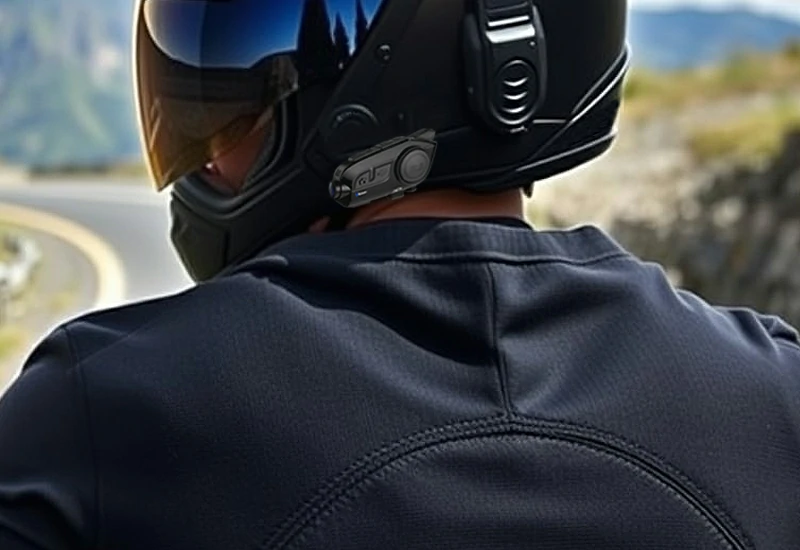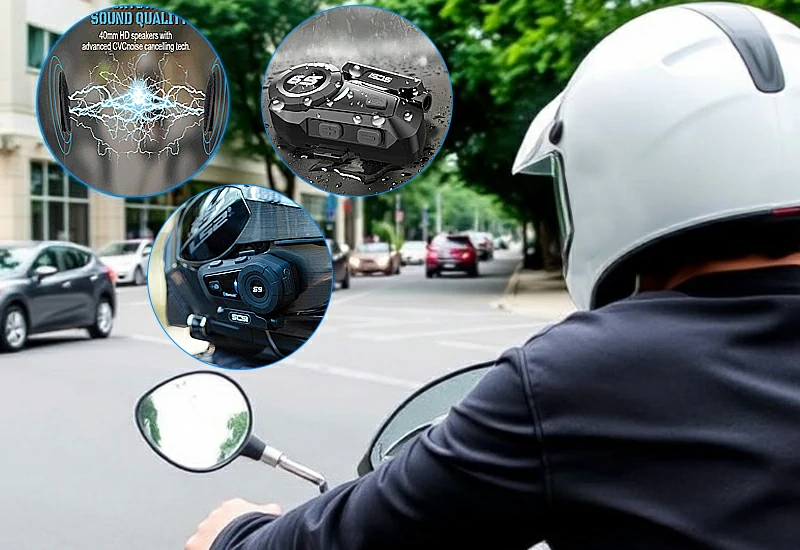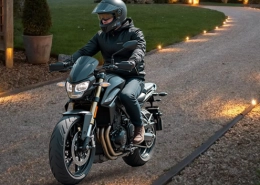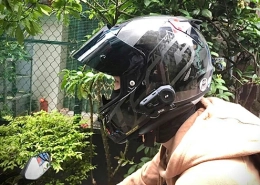Tips For Pairing Bluetooth Intercom With Any Motorcycle Helmet
Bluetooth headsets (or Bluetooth intercoms) have become an essential piece of equipment for motorcycle riding. Helmets of different styles and structures will present differences and challenges when wearing Bluetooth headsets. How can you enjoy the Bluetooth function comfortably and without obstacles without destroying the helmet’s safety? This article will reveal the practical secrets of how to smoothly integrate Bluetooth headsets into any helmet.
★ Helmet structure and compatibility
Before choosing a Bluetooth headset, first understand the structure of your helmet. Common types of helmets include: full face, 3/4, half, and modular (folding).
-
- Full face: The internal space is relatively closed, and it is recommended to choose an ultra-thin Bluetooth headset to avoid oppression.
- 3/4/half helmet: Usually the wearing space is more spacious, but you need to pay attention to the fixed position of the headset arm to prevent it from loosening during riding.
- Modular helmet: Because there are more opening and closing structures, you must choose a split or detachable microphone Bluetooth headset to adapt to different wearing states.
★ Installation location: stable and comfortable
Installing a motorcycle helmet Bluetooth intercom usually consists of three steps: fixing the Bluetooth host, placing the speaker and microphone, and organizing the cables and completing the pairing.
First, firmly install the Bluetooth module on one side of the helmet, with the USB or charging port preferably facing the rear for subsequent connection and maintenance, and be careful not to get stuck by the rubber pad.
Next, fit the speaker to the groove of the ear lining to ensure that the sound reaches the ear canal directly; the microphone can be flexibly installed according to the style of the helmet to ensure clear sound reception. It is best to place it in front of the mouth, about 2cm–3cm away, so that the sound can be picked up clearly. If there is a windproof pompom cover, it will greatly improve the sound quality when riding at high speed.
Finally, store all connecting cables under the helmet lining to avoid hooks or entanglement that affect wearing comfort.
After completing the hardware installation, wirelessly pair with a mobile phone or other intercom device according to the Bluetooth manual, and you can start testing the call, music playback and interconnection functions to enjoy a safe, comfortable and convenient riding communication experience.

★ Cable management: avoid tangling
Some split Bluetooth headsets require cables to connect the microphone and the headphones unit. Be sure to use cable ties or cable management clips to secure them to avoid being pulled when putting on and taking off the helmet. Do not wrap them around the lining at will to avoid damaging the cable or affecting the wearing comfort. Wireless integrated Bluetooth intercoms are more worry-free. You only need to pay attention to the location of the power interface and the charging method.
★ Waterproof and dustproof
Waterproof is also very important for long-distance travel and adventure routes. It is recommended to choose Bluetooth headphones with IP67 or higher ratings, which can cope with harsh conditions such as heavy rain and dust, and ensure uninterrupted communication. The helmet itself should also be equipped with a rain cover and a waterproof brim to achieve double protection.
If you have extra time, you can take a minute to quickly learn our Keep Dry And Ride In Any Weather guide
★ Sound quality optimization and efficient noise reduction: Enjoy clear listening
During motorcycle riding, wind noise and road noise are often very obvious, greatly interfering with voice communication and music experience.
It is very important to choose Bluetooth headsets with CVC digital noise reduction or DSP digital processing technology. These functions can intelligently identify environmental noise and filter it in real time, thereby significantly improving the clarity and intelligibility of voice. Whether it is team intercom or making calls, it can reduce external interference and ensure smooth communication. At the same time, the addition of high-fidelity speakers can also bring riders a wider and more delicate sound quality performance. Even at a high speed, you can feel the layers and dynamics of stereo music. Adjusting the appropriate volume is also not to be ignored: too high a volume will cover up important traffic sounds around and affect safety. Only a proper balance can take into account both hearing and environmental perception. With these sound quality optimization methods, Bluetooth intercoms are not only a tool for riding information communication, but also a mobile concert hall for you anytime, anywhere.
★ Safety first
Bluetooth headphones must be used with safety as a prerequisite. When wearing them, make sure the volume is not too loud and does not affect your perception of the external environment. Especially on urban roads or sharp bends in mountainous areas, always pay attention to other vehicles and pedestrians to avoid being distracted by immersing yourself in music.

★ Hands-free communication
The core advantage of motorcycle Bluetooth headsets is wireless communication, allowing you to make and receive calls and talk with teammates hands-free while driving, which comprehensively improves safety and convenience. Unlike traditional split headsets, Bluetooth motorcycle communication system are optimized for helmet wearing and can fit closely to the ear area without affecting the wearing and removal of helmets. The group communication function is a good helper for any team riding. Whether you use modular, full-face or half-face helmets, you can share road conditions, weather warnings and even rest arrangements in real time through one-click group pairing, which significantly improves the efficiency of team collaboration.
★ Details that cannot be ignored
When choosing a Bluetooth headphones to match a helmet, you should also pay special attention to comfort, such as whether the earmuffs have enough space to accommodate the speaker, whether the microphone is adjustable to adapt to different helmet structures, and whether the Bluetooth module itself is fixed firmly. The battery life is also not negligible. Long-distance travel requires a battery with at least 15 hours of intercom time to prevent loss of connection midway. The anti-interference performance of the Bluetooth connection should also be tested multiple times in urban and mountainous environments to confirm its connection stability. Only by considering all these factors can we ensure that the Bluetooth intercom headset is perfectly matched with any type of helmet to create a comfortable, smart and safe travel experience.
★ Enjoy every road trip
Bluetooth headsets have become an important companion for modern motorcyclists. By understanding the structure of the helmet, paying attention to the speaker installation position, optimizing cable management, and combining waterproof and dustproof capabilities with sound quality optimization, you can seamlessly combine Bluetooth intercom with any type of motorcycle helmet. Not only can you enjoy music on the road, but you can also keep in touch with your teammates at all times and enjoy a safer, more efficient and fun riding experience.







